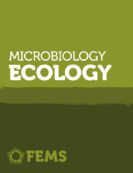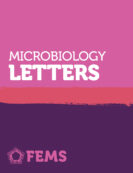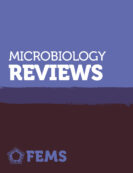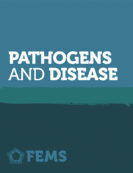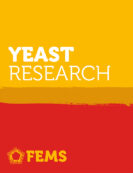FEMS Journals Best Poster Prize: Rhys White
We send our congratulations to Rhys White, who won the best poster prize at the 2022 New Zealand Microbiological Society Conference. This award is sponsored by the FEMS Journals.
 The New Zealand Microbiological Society Conference for 2022 – Microbes Rule! took place on the 21-24 November 2022.
The New Zealand Microbiological Society Conference for 2022 – Microbes Rule! took place on the 21-24 November 2022.
Read our interview with Rhys about his research below:
What is your current position, and what was your scientific journey to get there?
I started my research career with a placement year in the middle of my Bachelor of Science degree at Cardiff University (Wales, United Kingdom). This was based at the Danau Girang Field Centre in Sabah, Borneo. I witnessed deforestation first-hand and got involved with rehabilitation efforts by planting trees. We also tracked primates using Ultra High-Frequency downloads and radio telemetry, supervised primate surveys, field courses, and night walks. During this placement, I designed and implemented a scientific project focusing on nocturnal mosquito diversity in varying secondary forest ecotypes. On returning home to Wales, I volunteered for the BARC project at Cardiff University. BARC is a citizen science project, “Bag and Remove in Cymru” to assess the prevalence of soil parasites and raise awareness of the adverse effects of dog fouling and its impact on pet health. In the final year of my undergraduate degree, I met Tom Connor and Peter Kille, where I discovered my passion for bioinformatics. Tom supervised me for my undergrad thesis, where I investigated uropathogenic Escherichia coli circulating hospitals across Wales. This was my first introduction to Illumina short-read sequencing.
After my undergraduate degree, I started as an intelligence analyst for Public Health Wales – the national public health agency in Wales. I was part of a team leading a project around the prevalence of sexually transmitted infections across Wales. I later discovered that my application to undertake a PhD with Scott Beatson at The University of Queensland was successful. So, I packed up and moved all the way to Australia. My PhD investigated extraintestinal pathogenic Escherichia coli using whole-genome sequencing and comparative genomics. Our research sheds some light on how E. coli evolve and how antibiotic resistance spreads from one bacterium to another. I just completed all the requirements for my PhD in December 2022.
Now, I accepted a position as a Scientist with Dr. Joep de Light within the Bioinformatics and Human Genomics Team at the Institute of Environmental Science and Research (ESR), in Porirua (Aotearoa New Zealand). On reflection, I have had so many fantastic experiences, some of which most people may not ever experience. I have also met some incredible friends and colleagues along the way. All this is because STEM got me here!”
Could you describe the research your poster covered?
I presented our recent research on fluoroquinolone-resistant E. coli sequence type (ST)1193, which is associated with systemic, urinary tract and neonatal infections. Humans, companion animals and the environment are reservoirs for ST1193, which has been disseminated globally. We wanted to expand on the available ST1193 resources by describing the complete genomes of five ST1193 strains from Australia. The five ST1193 strains underwent sequencing with Illumina and Oxford Nanopore Technologies (ONT).
ONT sequencing is a breakthrough technological innovation that democratises sequencing in the genomics field. A relatively low initial outlay is associated with ONT, making it accessible for PhD projects with restricted funding. With the user-friendly library preparations and sequencing protocols (unique to ONT), we could simultaneously sequence all five novel genomes.
Antibiotic resistance, virulence genes, and mobile genetic elements were determined using in silico genotyping. Antibiotic susceptibility testing (AST) confirmed resistance profiles. We found that uropathogenicity factors were conserved in chromosomal and plasmid regions, including three separate siderophore-encoding loci. We further elucidated the recombination events surrounding the previously described K5/K1 capsular loci switch using all complete genomes. All ST1193 strains were multidrug-resistant, and most AST phenotypes correlated with their genotypes. The exception was strain MS8320, which had additional in vitro resistance to piperacillin/tazobactam, ampicillin/sulbactam, cefazolin, and doripenem (carbapenem). Further investigation identified seven additional copies of an IS26 transposable unit carrying a blaTEM-1B beta-lactamase gene, suggesting this tandem amplification is associated with extended resistance phenotypes. This study provides five new reference ST1193 genomes, including the first complete K5-capsule ST1193 genomes. These findings lay the foundations for further genomic and molecular analyses that may help understand the underlying reasons for the rapid global expansion of ST1193.”
What do you hope to focus your research on in the future?
I look forward to working with clinicians and our Pacific Island neighbours. I want to apply the skills developed throughout my PhD to help set up ‘in-house’ sequencing facilities in hospitals around Aotearoa New Zealand, and other Pacific nations. Having whole-genome sequencing technologies and the capacity to analyse these data and generate reports at the point of care will empower a more diverse group of people. I want to continue my fight against antibiotic resistance and help others with timely information. These things are important to me and will one day be essential in informing treatment decisions, disease transmission, surveillance, and ultimately improving patient outcomes.”
–
We use income from the FEMS Journals to fund grants, awards, and projects, and to support our knowledge sharing events and initiatives. Consider publishing your research with our journals to help the global microbiology community.
All but one of the FEMS journals are now fully open access (OA), with one journal, FEMS Microbiology Letters remaining a subscription journal with free-to-publish and OA options. Open access is key to supporting the FEMS mission of disseminating high quality research as widely as possible: when high quality, peer reviewed sound science is open access, anyone, anywhere in the world with an internet connection, can read it.

